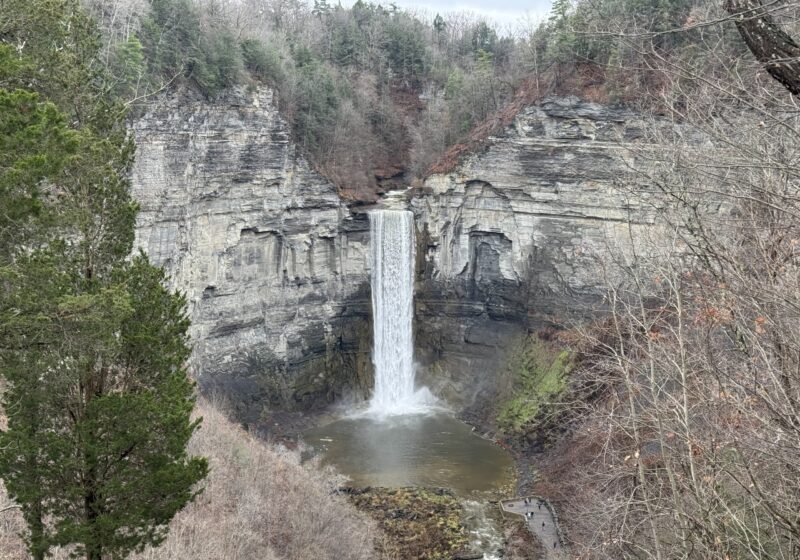Some people sprint to get to the finish line, while others power walk to it, which was the case for sophomore Laura Richenderfer all summer long.
When many students were enjoying cushy internships or high-paying physical labor, Richenderfer was busy walking toward national and even international acclaim.
Her journey started here at UR, where she finished out her freshman year winning the New York State Collegiate Track Conference Championships in the 3,000-meter race walk indoors as well as the 5,000-meter race walk outdoors.
In addition to the NYSCTC, Richenderfer also captured the Empire State Games Western Regional Championship title in the 5,000-meter race walk and even etched her name in the school’s race walk record book.
The event, race walking, has deep roots dating back to the16th century – a period when traveling on foot was the common mode of transportation.
English aristocracy utilized this mode of transport employing “footmen” to accompany them during their travels across country by coach. Generally, the servants carried messages and other personal documents.
The competitive nature of this act grew at the tail end of the 18th century when feats such as 100 miles in 24 hours earned a runner the title “Centurion.”
The sport was quickly imported to America, where it amassed a large audience and eventually became recognized as an international sporting event.
Race walking parallels long distance running in many respects, yet the form and techniques are quite different. First, race walking requires one foot always maintaining contact with the ground. Next, the knee has to be straightened between the point of contact with the ground and as it passes under the body. The task is not as easy as it sounds.
Richenderfer first got interested in running in the eighth grade. During her freshman year of high school, she started to specialize in race walking. It was not until high school that she was able to perfect her skills and develop a professional style.
“It is more than just a normal running race because it’s not just about who can get from the start line to the finish line the fastest. You have to be able to maintain this technique and master it enough to be able to legally get yourself to the finish line first.”
The accolades from her freshman year put Richenderfer in a position to compete on a national scale. She earned a spot at the USA Track and Field Junior National Championships in Carson, Calif., going up against the best athletes in the entire country.
In Carson, Richenderfer won a spot in the 10 kilometer race walking event, a distance of just over 6.2 miles. She completed the race with a time of 54 minutes and 2.84 seconds which ranked 2nd out of the other competitors. Richenderfer’s runner-up finish qualified her for a spot on Team USA, allowing her to compete in the 2005 Pan American Junior Championships at the University of Windsor in Ontario Canada. It’s an event that features the best 14-19 year-old athletes in the world.
The jump from a national spot to an international qualifying start had Richenderfer ecstatic.
“It was the most satsifying feeling, not [necessarily] the greatest race, but crossing that line knowing I would compete against international athlestes was incredible.”
She spent the next month gearing up for trip to Ontario. When the time came, Richenderfer got to appear with 13 other challengers from around the world, and the pressure was certainly there.
“There is a lot of pressure, just because you are wearing USA across your chest and representing your country, but the motivation you get from it is something I’ve never experienced before,” Richenderfer said. “You do learn a lot though competing against people that speak another language.”
While competing at an international level, Richenderfer discovered one of the most important aspects of the game – tenacity.
“It was one of the most humbling experiences because you get to be out there and race girls that have been training just as hard, if not harder than you. It’s really great to have that kind of competition. It’s motivating, but it felt incredibly rewarding to make it there. All the work I put in all year really counted for something.”
Of the 14 people participating in the 10-kilometer race walk, Richenderfer finished eighth with a time of 52 minutes and 54.4 seconds. It is important to remember that she competed against people in her age group who were the best in the world.
For Richenderfer, power walking has become an event that symbolizes the highest level of sportsmanship and honesty. It is a sport that evokes a form of integrity that serves as a moral compass.
“Once you get a little experience, you learn to appreciate honesty, because that’s really what protects integrity of the sport. When you’re an athlete who has gone out there and practiced for hours each day and then turn around and cheat by running or just breaking form, then the race is meaningless and all the work you put in would have been worthless.”
Richenderfer cites this honesty as the result of “experiencing the satisfaction of success. There is no way I could have compromised that feeling. I would never think about cheapening the experience by cheating.”
Her accomplishments this summer serve as the starting point down a road of great success. The Pan American Junior Championships is one of the most venerated sporting events and attracts some of the best athletes from around the world. Roughly 85 percent of the competitors will make an Olympic team at some point in their career.
When asked if the Olympics was a possible career move, Richenderfer replied, “I’m ready to take an opportunity that comes up whether that includes the Olympics or not. We’ll have to see.”
For now, we’ll just have to sit back and keep reading the sports pages looking for Laura’s name.
Serafini can be reached at jserafini@campustimes.org.



